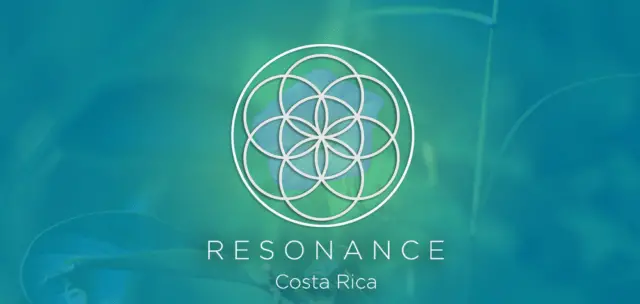MANAGUA, Nicaragua and GUATEMALA CITY – The United Nations Office on Drugs and Crime (UNDOC) has made it perfectly clear to Central America: It must do a lot more to stop the rise of the trafficking and consumption of synthetic drugs.
That’s because synthetic drugs such as LSD, speed and ecstasy have displaced cocaine and heroin throughout the world, ranking second among the most-used narcotics after marijuana, according to a UNODC report.
The UNDOC’s 2011 World Drug Report, which ranks Holland and Myanmar as the main producers of amphetamine type stimulants globally, states the narcotics also are being manufactured in countries in Central and South America, such as Brazil, Argentina, Guatemala, Nicaragua and Suriname.
“A record seizure of six laboratories was reported in 2009, including two methamphetamine laboratories in Brazil and Nicaragua, an ecstasy lab in Brazil and three labs that produce both drugs in Guatemala,” the report states.
In Central America, authorities are already sizing up the problem.
Esteban Guido, chief of drug investigations with the Nicaraguan National Police, said Mexican drug cartels have established a presence in several Central American countries, which demonstrates the region’s vulnerability.
“New, emerging cartels are forming and they are transporting small shipments [of synthetic drugs], but doing so more frequently,” Guido said. “[We have found] Central American laboratories where synthetic drugs – like amphetamines – are made. This is one of the ways Mexican organized crime is looking to [diversify and] support its business.”
A threat to the region
A total of 844 pounds of ephedrine was seized worldwide in 2007. Two years later, the number rose to 23,376 pounds, according to the UNODC.
In Latin America, the highest number of synthetic drug seizures occurred in 2007, when 1,371 pounds were confiscated. In 2009, the amount fell to 535 pounds, according to the UNODC.
While Nicaragua and Guatemala acknowledge the existence of clandestine laboratories, they reiterated their countries are not points of massive manufacturing of synthetic drugs.
In Guatemala, authorities have dismantled at least six synthetic drug laboratories this year.
“We have found them on the border with Mexico, which leads us to believe that our neighboring country was the destination for what was being produced,” Mario Castañeda, vice minister of security, said.
[captionpix imgsrc=”https://thecostaricanews.com/wp-content/uploads/2011/11/drugs1.jpg” align=”right” captiontext=””]From January through June 2011, Guatemalan police had incinerated about 17,354 pounds of pseudoephedrine, which is used to make synthetic drugs, worth $9.73 million quetzales (about US$1.25 million). During the same period, authorities burned 13,020 pounds of cocaine and 3,132 pounds of marijuana.
“With the findings we can see that there is a presence [of organizations that traffic this drug],” Castañeda said. “We are very concerned about a large influx of precursor drugs, which indicates to us that we will find more laboratories.”
In Nicaragua during the past five years, three amphetamine laboratories have been destroyed.
“In Nicaragua, we can state that we have not found massive synthetic drug production facilities,” said Fernando Borge, major commissioner for Public Relations of the Nicaraguan National Police. “[Although] we have dismantled laboratories, none has been structured compared to those in other countries, where we found tools and some of the supplies used to make these narcotics. Thanks to the hard work of the institution and the community, [the labs] have not grown to be massive production centers.”
In 2010, the Nicaraguan National Police discovered the country’s largest synthetic drug laboratory in Villa El Carmen, in northeastern Managua. During the raid, they found 1.7 pounds of amphetamines. The lab had the materials needed to produce about 174 pounds of the drug.
A Mexican national and two Guatemalans were arrested, while other suspects escaped during a firefight.
“In the three cases of the laboratories, we stress, those implicated were Nicaraguans with connections to foreigners, who used them as guards and drivers,” Borge said.
[captionpix imgsrc=”https://thecostaricanews.com/wp-content/uploads/2011/11/drugs3.jpg” align=”left” captiontext=””]In 2008, Nicaraguan police seized a shipment from South America containing 216,000 amphetamine tablets, worth US$4.438 million, destined for North America.
An amphetamine tablet is worth US$20 on the black market, according to the Nicaraguan National Police.
El Salvador (3.3%), Belize (1.4%) and Costa Rica (1.3%) have high levels of use of synthetic drugs among the 15- to 64-year-old demographic, according to the UNODC.
In Guatemala, the government has registered a higher level of synthetic drug use as well, mainly among younger people.
“We are concerned because these substances are highly addictive to users,” Castañeda said.
Officer Sérgio Luiz Queiroz Sampaio da Silveira, of Brazil’s Federal Police Intelligence Division’s Data Analysis Unit (SADIP), said the side effects of synthetic drug use are high blood pressure, tachycardia, increased respiratory rate and hyperactivity. These reactions can cause serious cardiovascular and respiratory problems, even leading to death.
Synthetic drugs can also lead to neuronal degeneration, causing serious cognitive problems, according to Brazil’s Federal Police.
In April, 2009, the Guatemalan Ministry of Health made possessing, using, selling and shipping any products containing pseudoephedrine illegal.
Brazil passed a similar law banning amphetamine-based appetite suppressants.
However, the Guatemalan law does not prohibit the sale of other precursors for these drugs, such as phenylacetic acid and acetone, among others.
Correspondent Cristine Pires contributed to this report from Porto Alegre, Brazil.

